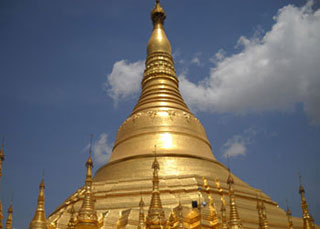A pagoda. in Southeast Asia. is cone-shaped monumental structure built in memory of Buddha. But in the Far East. a pagoda is a tower like. multistoried structure of stone. brick. or wood. usually associated with a Buddhist temple complex. The pagoda derives from the stupa of ancient India. which was a dome-shaped commemorative monument. usually erected over the remains or relics of a holy man or king. The hemispherical domed stupa of ancient India evolved into several distinct forms in various parts of Southeast and East Asia.


The finial. or decorative crowning ornament of the stupa. became more elongated and cylindrical until the stupa’s upper portion took on an attenuated. tower like appearance. This stupa form was adopted by Buddhism as an appropriate form for a monument enshrining sacred relics and became known to Westerners as a pagoda. The Buddhist pagoda was elaborated in Tibet into a bottle-shaped form; it took pyramidal or conical designs in Burma. Thailand. Cambodia. and Laos; and in China. Korea. and Japan. it evolved into the best-known pagoda form.
The latter was a tall tower consisting of the vertical repetition of a basic story unit in regularly diminishing proportions. The stories can be circular. square. or polygonal. Each story in an East Asian pagoda has its own prominent projecting roof line. and the whole structure is capped by a mast and disks. The pagoda form is intended primarily as a monument and has very little usable interior space.

Comment (0)